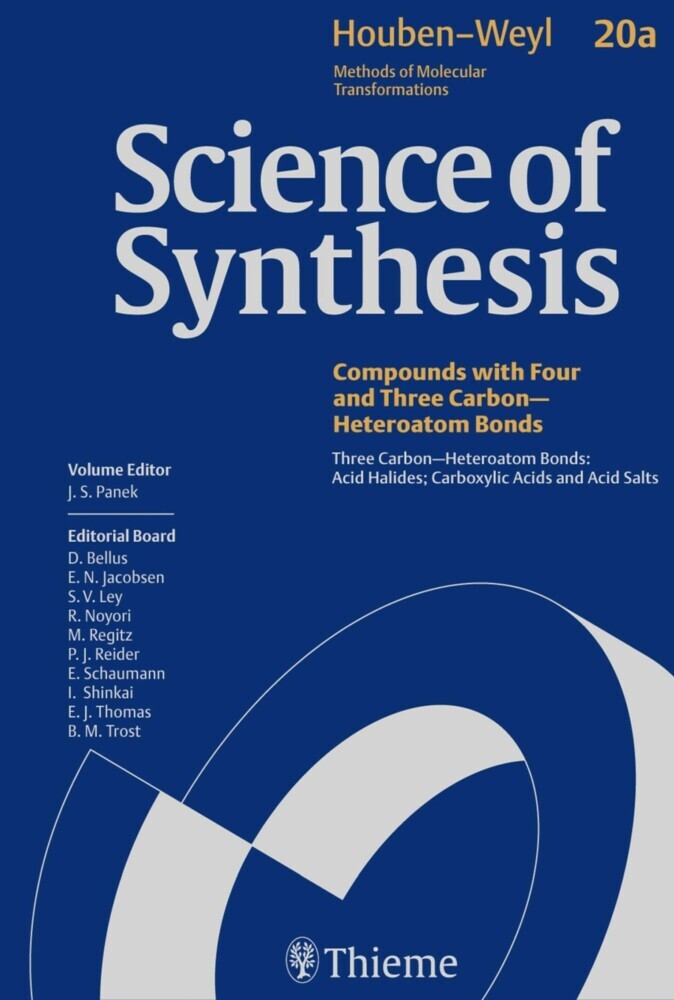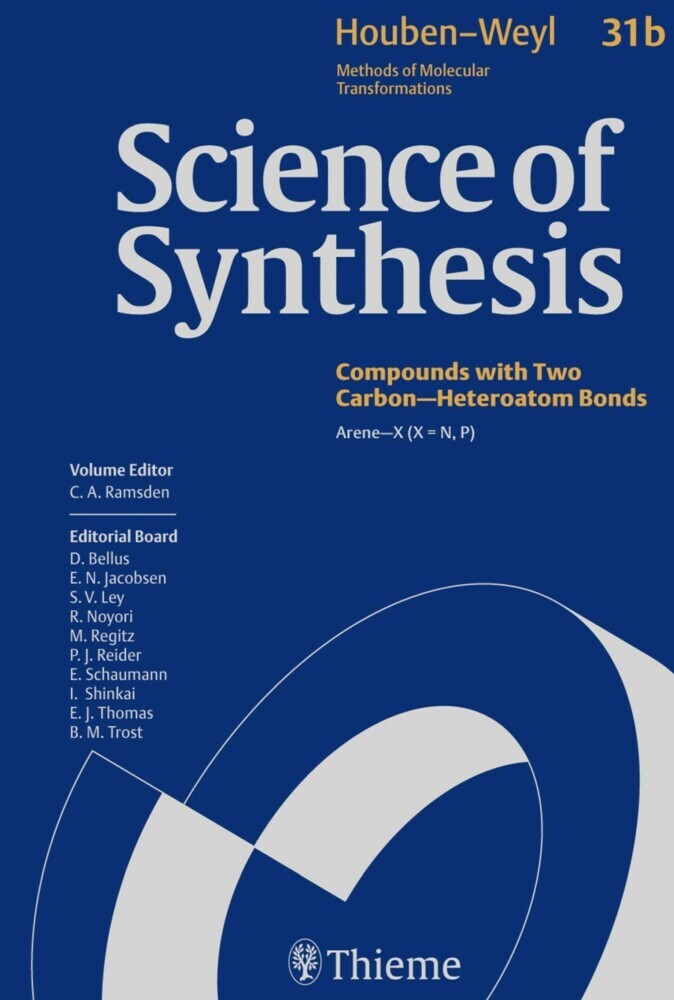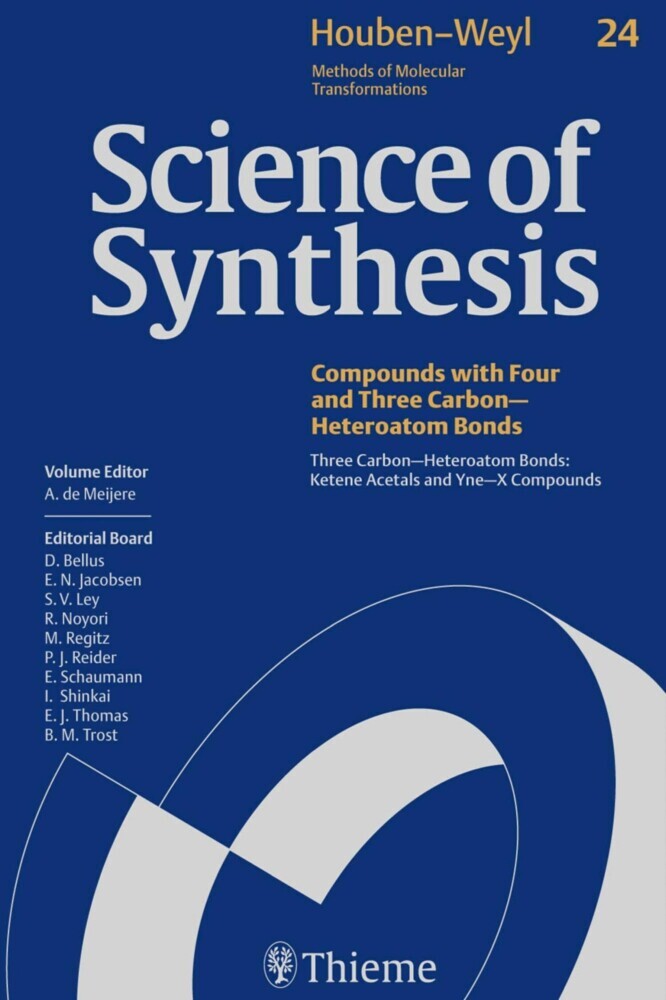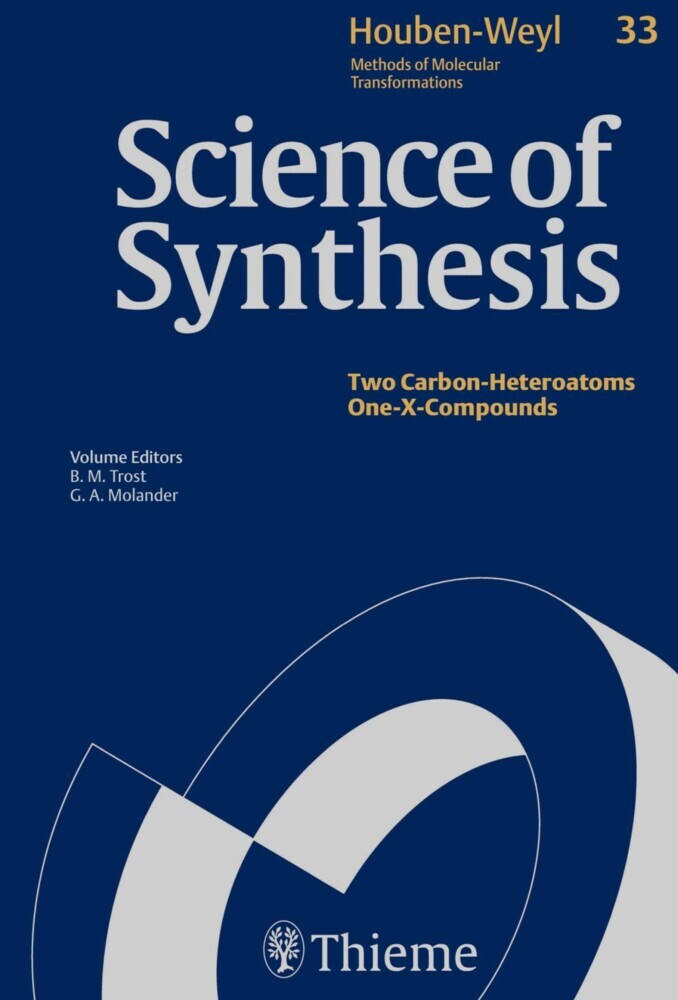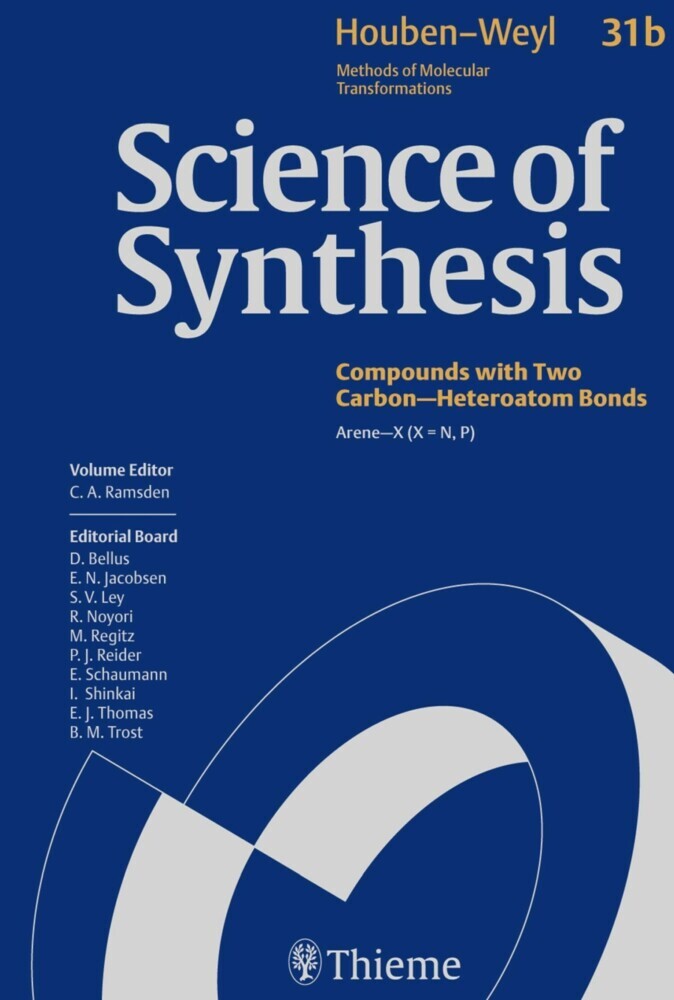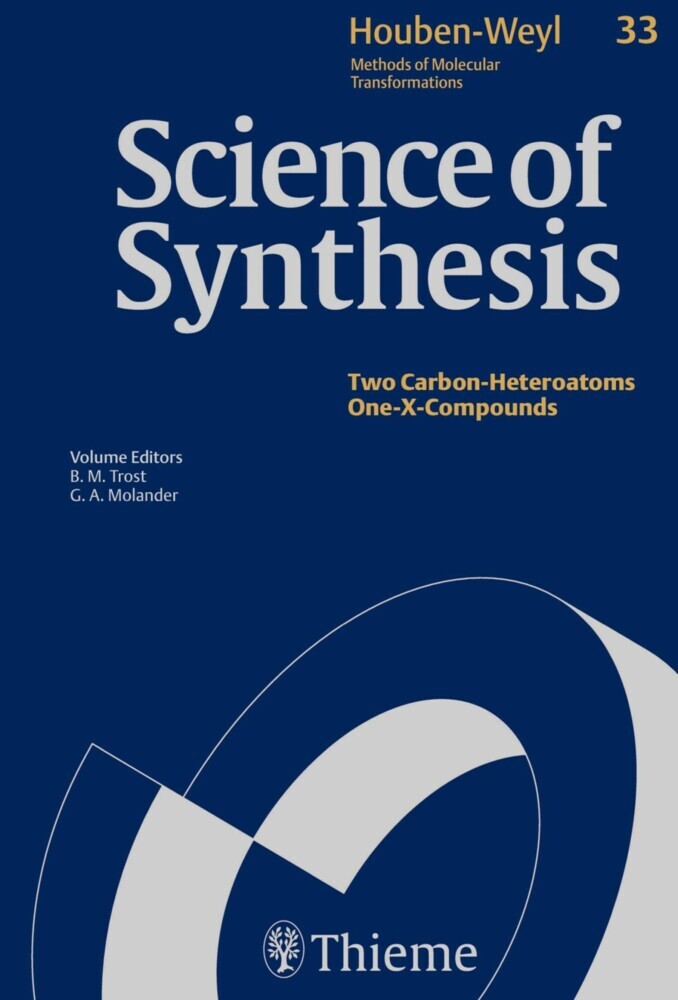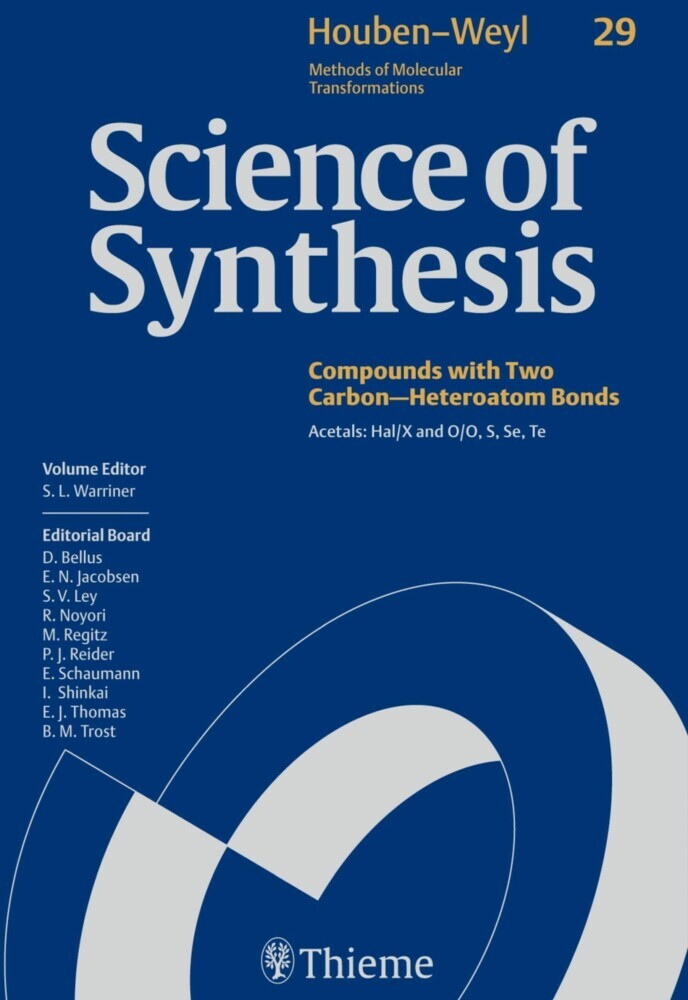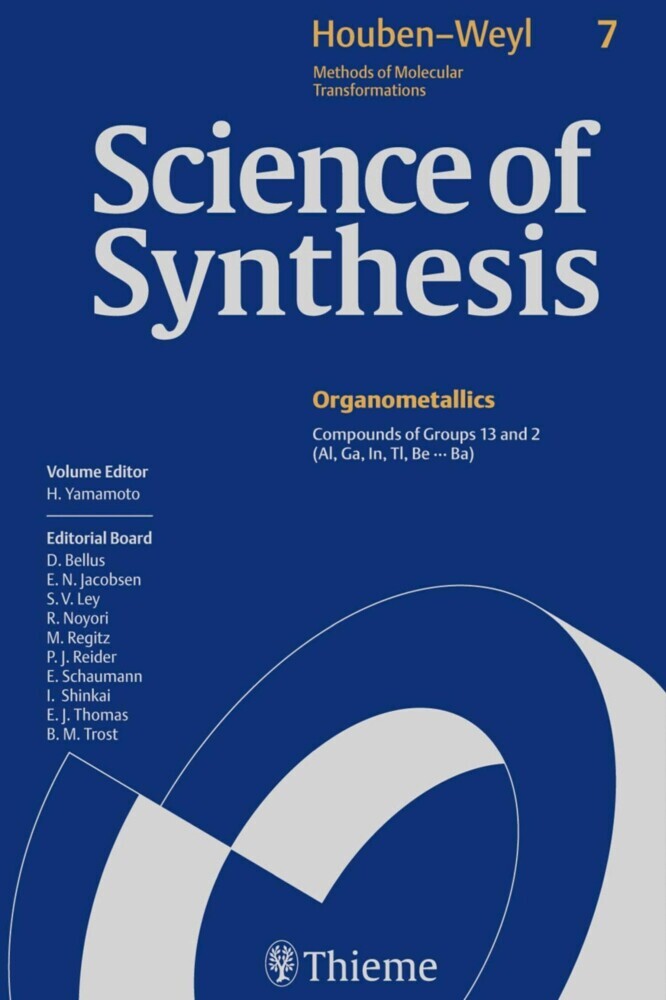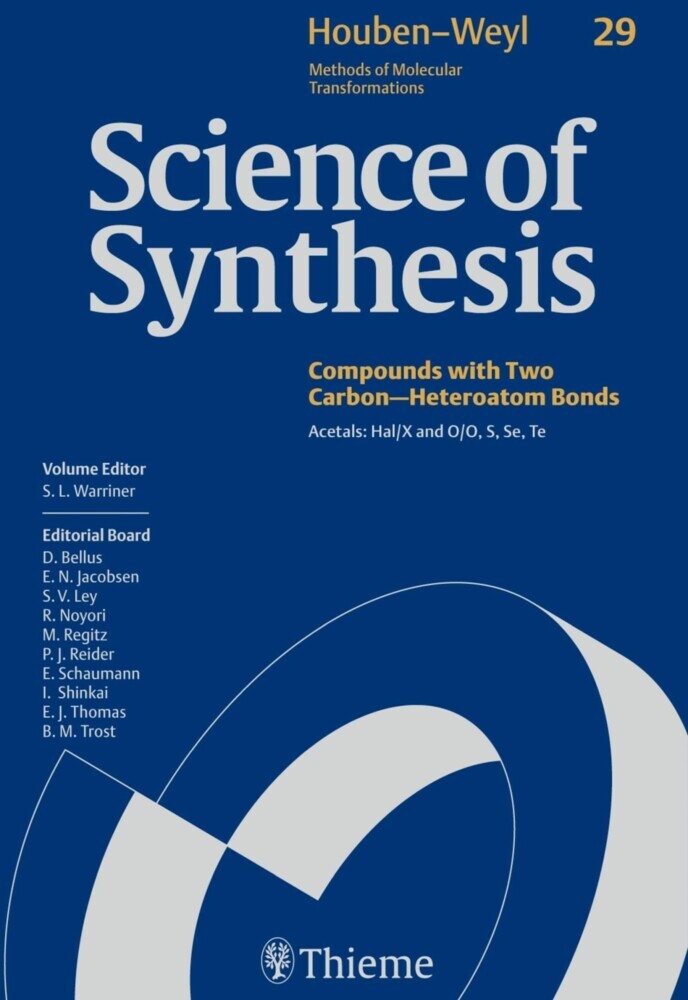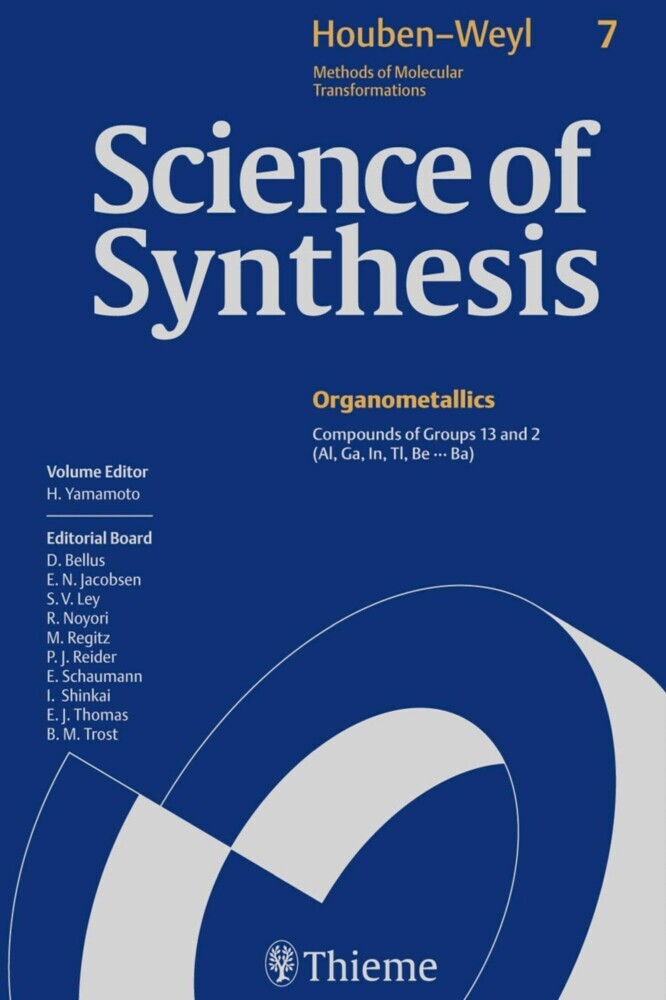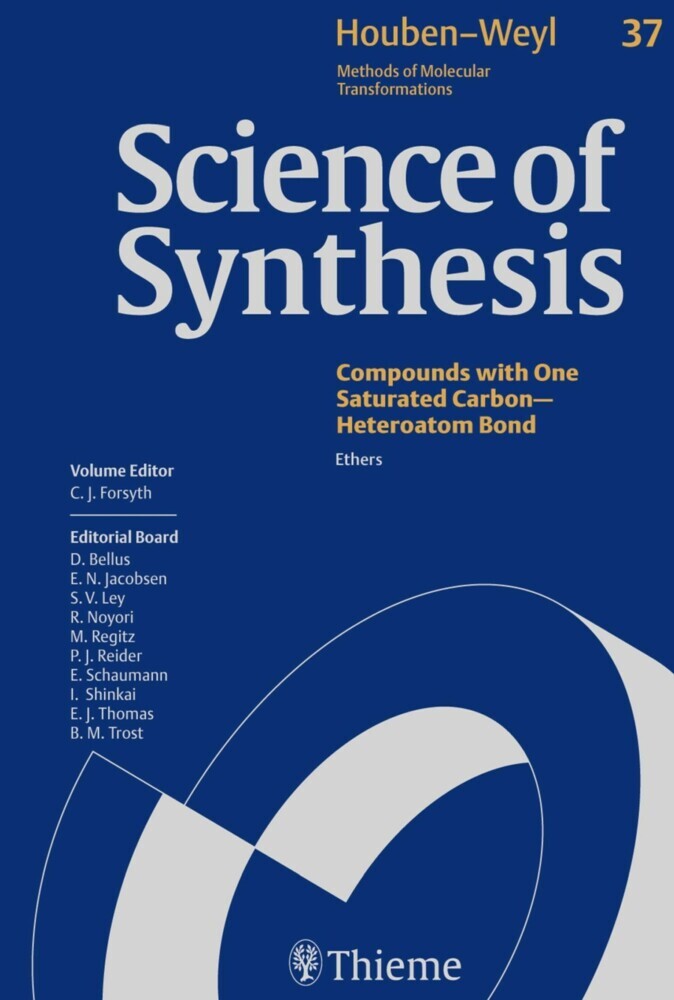Science of Synthesis: Houben-Weyl Methods of Molecular Transformations Vol. 20a. Vol.20a
Three Carbon-Heteroatom Bonds: Acid Halides; Carboxylic Acids and Acid Salts
Science of Synthesis: Houben-Weyl Methods of Molecular Transformations Vol. 20a. Vol.20a
Three Carbon-Heteroatom Bonds: Acid Halides; Carboxylic Acids and Acid Salts
Science of Synthesis: Houben-Weyl Methods of Molecular Transformations is the entirely new edition of the acclaimed reference series Houben-Weyl, the standard synthetic chemistry resource since 1909. This new edition is published in English and will comprise 48 volumes published between the years 2000 and 2008.
Science of Synthesis is a quality reference work developed by a highly esteemed editorial board to provide a comprehensive and critical selection of reliable organic and organometallic synthetic methods. This unique resource is designed to be the first point of reference when searching for a synthesis strategy.
- Contains the expertise of presently 400 leading chemists worldwide
- Critically evaluates the preparative applicability and significance of the synthetic methods
- Discusses relevant background information and provides detailed experimental procedures
For full information on the Science of Synthesis series, visit the Science of Synthesis Homepage
1;Science of Synthesis - Volume 20a: Three Carbon--Heteroatom Bonds: Acid Halides; Carboxylic Acids and Acid Salts;1 1.1;Title page;3 1.2;Imprint;5 1.3;Preface;6 1.4;Volume Editor's Preface;8 1.5;Overview;10 1.6;Table of Contents;12 1.7;Introduction;32 1.8;20.1 Product Class 1: Acid Halides;46 1.8.1;20.1.1 Product Subclass 1: Acid Fluorides;51 1.8.1.1;20.1.1.1 Synthesis of Product Subclass 1;52 1.8.1.1.1;20.1.1.1.1 Method 1: Fluorination of Carboxylic Acids;52 1.8.1.1.1.1;20.1.1.1.1.1 Variation 1: Treatment with 2,4,6-Trifluoro-1,3,5-triazine;52 1.8.1.1.1.2;20.1.1.1.1.2 Variation 2: Treatment with Tetramethylfluoroformamidinium Hexafluorophosphate;53 1.8.1.1.1.3;20.1.1.1.1.3 Variation 3: Treatment with N,N-Diethylaminosulfur Trifluoride or N,N-Bis(2-methoxyethyl)aminosulfur Trifluoride;54 1.8.1.1.1.4;20.1.1.1.1.4 Variation 4: Treatment with Pyridinium Poly(hydrogen fluoride)/Dicyclohexylcarbodiimide;56 1.8.1.1.1.5;20.1.1.1.1.5 Variation 5: Treatment with 1-Fluoro-N,N,2-trimethylprop-1-en-1-amine;57 1.8.1.1.2;20.1.1.1.2 Method 2: Reactions of Acid Chlorides with Fluoride Ion;58 1.8.1.1.3;20.1.1.1.3 Method 3: Reactions of Carboxylate Esters and Anhydrides with Hydrogen Fluoride or Hydrogen Fluoride/Pyridine;59 1.8.2;20.1.2 Product Subclass 2: Acid Chlorides;60 1.8.2.1;20.1.2.1 Synthesis of Product Subclass 2;61 1.8.2.1.1;20.1.2.1.1 Method 1: Chlorination of Carboxylic Acids;61 1.8.2.1.1.1;20.1.2.1.1.1 Variation 1: Treatment with Oxalyl Chloride;61 1.8.2.1.1.2;20.1.2.1.1.2 Variation 2: Treatment with Thionyl Chloride;64 1.8.2.1.1.3;20.1.2.1.1.3 Variation 3: Treatment with Triphenylphosphine/Carbon Tetrachloride and Other Phosphorus-Based Reagents;67 1.8.2.1.1.4;20.1.2.1.1.4 Variation 4: Treatment with 1-Chloro-N,N,2-trimethylprop-1-en-1-amine;69 1.8.2.1.1.5;20.1.2.1.1.5 Variation 5: Treatment with Bis(trichloromethyl) Carbonate;70 1.8.2.1.1.6;20.1.2.1.1.6 Variation 6: Treatment with 2,4,6-Trichloro-1,3,5-triazine;71 1.8.2.1.2;20.1.2.1.2 Method 2: Chlorination of Trialkylsilyl Carboxylate Esters;72 1.8.3;20.1.3 Product Subclass 3: Acid Bromides;73 1.8.3.1;20.1.3.1 Synthesis of Product Subclass 3;74 1.8.3.1.1;20.1.3.1.1 Method 1: Reactions of Carboxylic Acids with Phosphorus Tribromide;74 1.8.3.1.2;20.1.3.1.2 Method 2: Reactions of Carboxylic Acids or Trialkylsilyl Carboxylate Esters with Dibromotriphenylphosphorane;74 1.8.3.1.3;20.1.3.1.3 Method 3: Reactions of Carboxylic Acids with 1-Bromo-N,N,2-trimethylprop-1-en-1-amine;76 1.8.3.1.4;20.1.3.1.4 Method 4: Halide-Exchange Reactions of Acid Chlorides;77 1.8.3.1.5;20.1.3.1.5 Method 5: Oxidation of Aldehydes;78 1.8.4;20.1.4 Product Subclass 4: Acid Iodides;78 1.8.4.1;20.1.4.1 Synthesis of Product Subclass 4;79 1.8.4.1.1;20.1.4.1.1 Method 1: Synthesis from Acid Chlorides;79 1.8.4.1.2;20.1.4.1.2 Method 2: Synthesis from Carboxylate Esters;80 1.9;20.2 Product Class 2: Carboxylic Acids;106 1.9.1;20.2.1 Product Subclass 1: Alkanoic Acids;106 1.9.1.1;20.2.1.1 Synthesis from Carbonic Acid Derivatives;84 1.9.1.1.1;20.2.1.1.1 Method 1: Reactions with Carbon Dioxide;84 1.9.1.1.1.1;20.2.1.1.1.1 Variation 1: Reaction with Unstabilized Organometallic Carbanions;85 1.9.1.1.1.2;20.2.1.1.1.2 Variation 2: Reaction with Benzylic Carbanions;89 1.9.1.1.1.3;20.2.1.1.1.3 Variation 3: Reaction with Allylic and Propargylic Carbanions;93 1.9.1.1.1.4;20.2.1.1.1.4 Variation 4: Reaction with a-Heteroatom-Stabilized Carbanions;94 1.9.1.1.1.5;20.2.1.1.1.5 Variation 5: Electrochemical Carboxylations;97 1.9.1.1.1.6;20.2.1.1.1.6 Variation 6: Miscellaneous Carboxylations with Carbon Dioxide;100 1.9.1.1.2;20.2.1.1.2 Method 2: Use of Other Carbonic Acid Derivatives;101 1.9.1.2;20.2.1.2 Synthesis from Carboxylic Acid Derivatives;106 1.9.1.2.1;20.2.1.2.1 Method 1: Hydrolysis of Acid Halides;106 1.9.1.2.2;20.2.1.2.2 Method 2: Hydrolysis of Acid Anhydrides;107 1.9.1.2.3;20.2.1.2.3 Method 3: Hydrolysis of Esters;107 1.9.1.2.3.1;20.2.1.2.3.1 Variation 1: Base-Catalyzed Hydrolysi
| ISBN | 9783131719317 |
|---|---|
| Artikelnummer | 9783131719317 |
| Medientyp | E-Book - PDF |
| Copyrightjahr | 2014 |
| Verlag | Georg Thieme Verlag KG |
| Umfang | 710 Seiten |
| Sprache | Englisch |
| Kopierschutz | Digitales Wasserzeichen |

